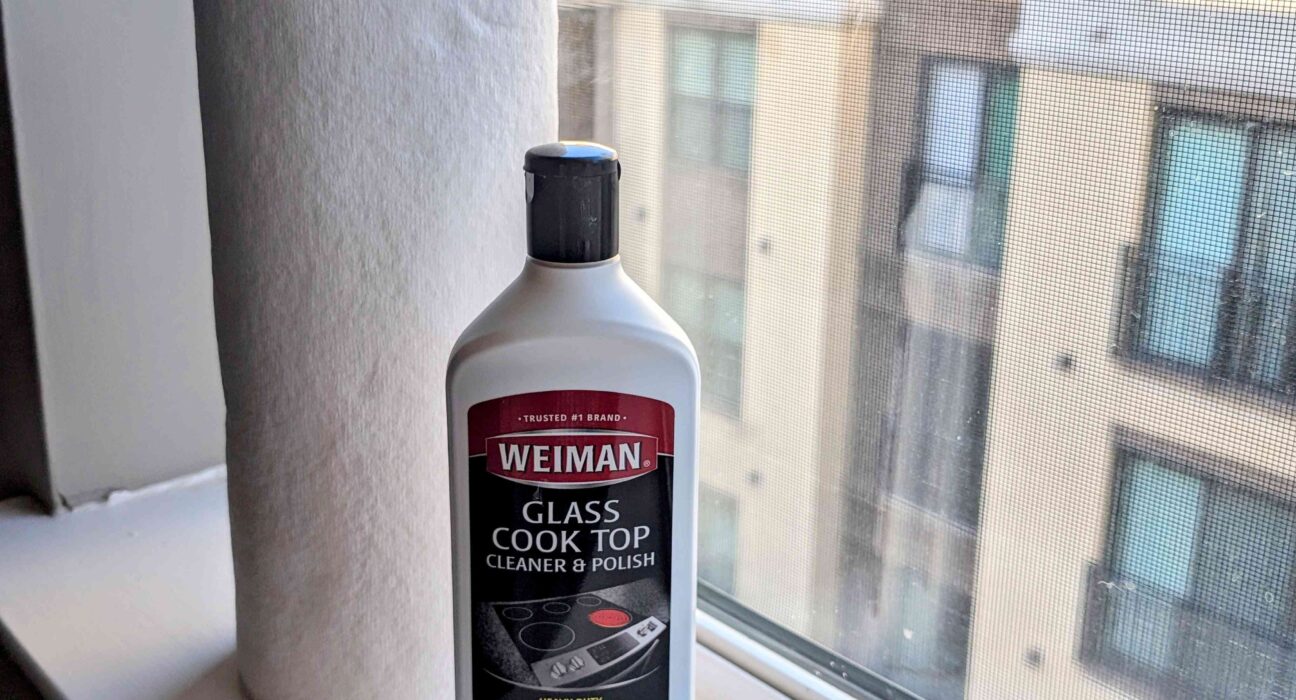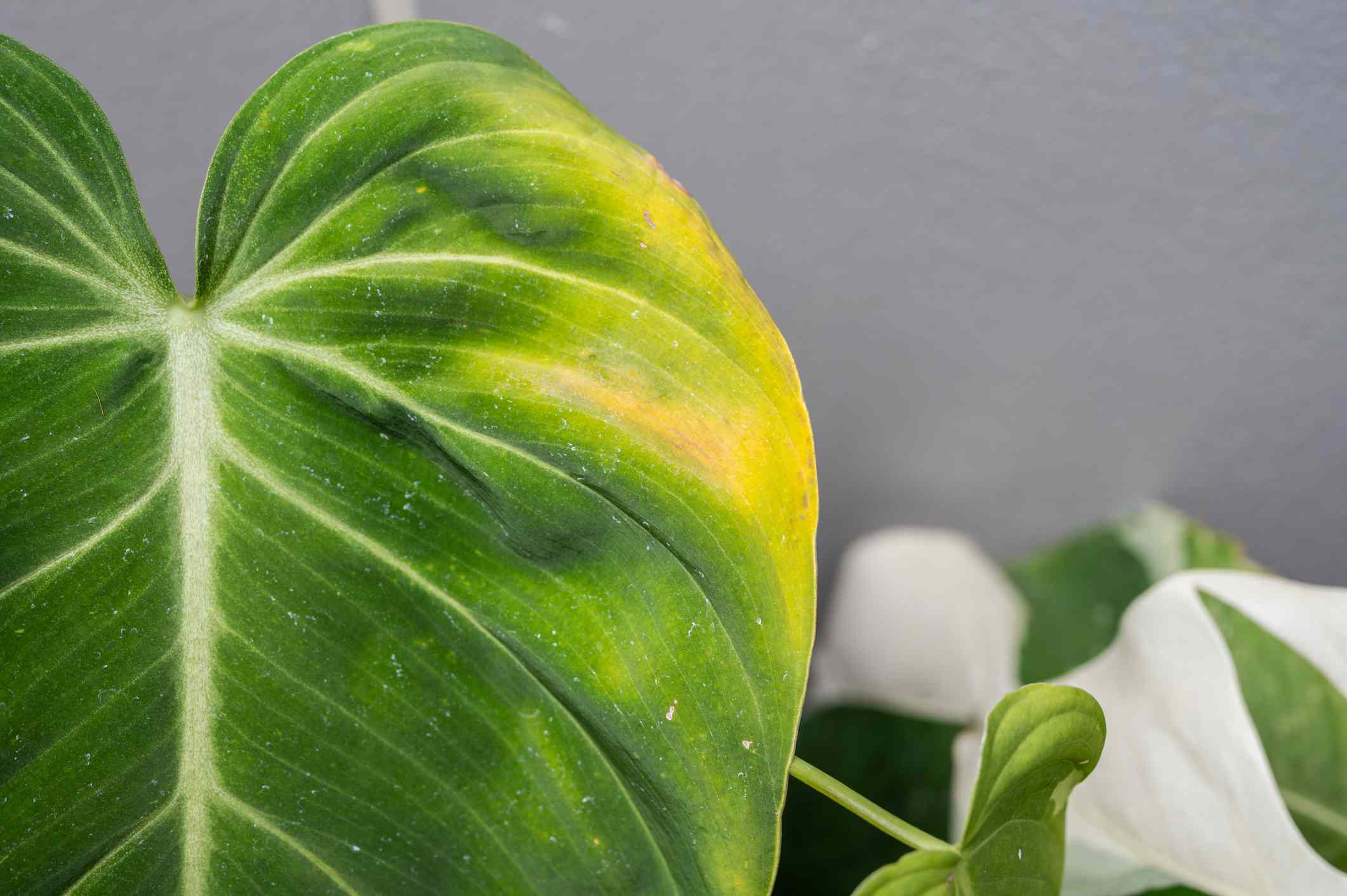I’m not a huge fan of window cleaning—is anyone? If it’s done poorly, your windows can end up smudged and look worse than they did before, and figuring out how to clean windows well already seems like enough of a chore. So, I’m always curious about window cleaning tricks and shortcuts, including ones that use cleaning products I already have at home.
In that spirit, I tried cleaning my windows with glass stovetop cleaner to see what would happen. Here’s what I learned about using glass stovetop cleaner on my windows.
The Spruce / Rabekah Henderson
How I Cleaned My Windows With a Glass Stovetop Cleaner
-
Gather Cleaning Supplies
The Spruce / Rabekah Henderson
I grabbed a bottle of glass stovetop cleaner (I used Weiman Glass Cook Top Cleaner & Polish), a roll of paper towels, and a microfiber cloth.
I found a dirty corner of my kitchen window with a few cooking stains and cat nose prints. I also smeared a bit of dirt onto the window to see how the cleaner would do with more textured stains. I let the stains dry before continuing.
-
Apply the Cleaner
The Spruce / Rabekah Henderson
I squirted a little over a teaspoon of stovetop cleaner onto the dirty corner of my window. It was difficult to apply because the cleaner was runny and more landed on the windowsill than on the glass. Applying the cleaner with a cloth would be easier.
-
Rub the Cleaner In
The Spruce / Rabekah Henderson
I used a microfiber cloth to rub the cleaner on the dirty part of the window. It was fairly easy to wipe around. The cleaner also had a nice scent.
-
Buff Out the Cleaner
The Spruce / Rabekah Henderson
I used a paper towel to buff out the cleaner, which required some elbow grease. However, most of the cleaner came off the glass after one pass. The areas around the frame needed a bit more detailed work.
The Verdict
The glass stovetop cleaner worked. It cleaned away the stains on my window and didn’t leave behind any smears or streaks when I checked the window 30 minutes later. It was also less messy. I liked that I didn’t need to wipe away a lot of excess liquid with a squeegee, which is my least favorite part of window cleaning with traditional glass cleaners.
But Why I Won’t Be Using This Trick Again
Two factors make me think I won’t be trying this again: effort and cost. Cleaning a small part of the window with a glass stovetop cleaner took about 90 seconds. However, I can normally clean an entire kitchen window within that time using a regular spray-on glass cleaner. A glass stovetop cleaner also needs buffing. Although a small section is not too hard to buff out, a few windows would require much more effort.
Using a glass stovetop cleaner instead of a standard glass cleaner was also more expensive. The only stovetop cleaner my local Target carried (Weiman Glass Cook Top Cleaner & Polish) was $5.29 for 15 ounces. In comparison, Windex Glass Cleaner Spray costs $3.99 for 26 ounces and Sprayway Aerosol Glass Cleaner costs $2.59 for 19 ounces.
The stovetop cleaner was about 150% more expensive than other options. I also used more of the runny, thick textured glass stovetop cleaner than I would have if I used my normal spray-on window cleaner.
When This Glass Cooktop Cleaner Trick Is Best
While I wouldn’t recommend using glass cooktop cleaner as your regular window cleaner, it’s helpful in a pinch. It’s also useful if you’re cleaning the stovetop and need to remove a smudge from your window, but don’t feel like grabbing another cleaner.
Other Ways to Clean Your Window
Looking for other ways to clean your window that don’t involve the usual suspects? These two tried-and-true options are great choices to get your glass sparkling clean:
- Vinegar: Clean windows with vinegar using a homemade cleaning solution. Just spray down the window and wipe away the solution.
- Dish soap: Use a little bit of diluted dish soap to wipe away stubborn stains and smears. Just make sure to buff it out.




